I Dig Sports
Sources: Atleti near deal to sign Barca's Suarez
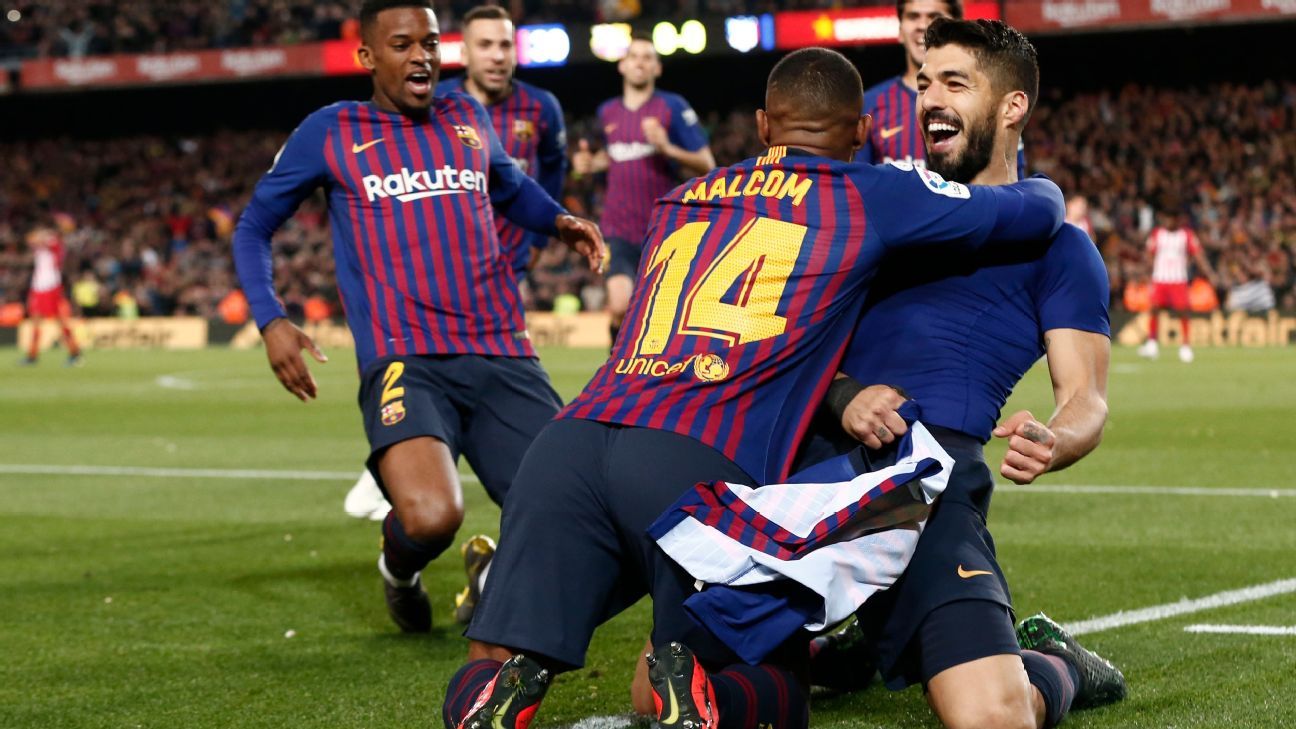
Atletico Madrid are near completion of the signing of Luis Suarez after the striker edged closer to terminating his contract with Barcelona, various sources have confirmed to ESPN.
There's a desire on Atletico's half to announce the deal as soon a possible, but they must first move on Alvaro Morata, who is in talks to join Juventus on loan with an option to buy.
- Insider Notebook: Man United frustrated by fans on Twitter
- Stream FC Daily on ESPN+
Coach Diego Simeone has been the driving force behind Atletico's move for Suarez, which is dependent on him arriving for free due to the financial implications of the coronavirus pandemic on the club.
Suarez, 33, has one more year to run on the terms he signed with Barca in 2016 but was told by new coach Ronald Koeman last month that he was not part of his plans.
Following that conversation with Koeman, Suarez's legal team have been locked in discussions with Barcelona over the recision of his deal.
Suarez initially wanted the club to pay off the contract in full, while several high-ranking sources at Barca told ESPN they were considering banishing Suarez to the stands for the remainder of his terms if an agreement couldn't be struck.
Koeman did not call him up for any of Barca's friendlies in preseason but said he would look to reintegrate him into the squad if he ended up staying.
However, sources have told ESPN that the two parties are finally close to reaching a middle ground to allow Suarez to leave Camp Nou as a free agent. He will receive a percentage of what is owed from the final year of his deal and will look to make up the rest with his next club.
The Uruguay international has already turned down an offer from Inter Miami CF that would have seen him become the highest-ever earner in Major League Soccer, while interest from Juventus has now cooled.
Sources told ESPN the Italian champions had agreed a deal with Suarez as they looked to replace Gonzalo Higuain, who joined Miami last week, but delays in obtaining Italian citizenship put the brakes on a potential deal. Juve are instead in talks with Morata and Edinson Cavani.
Despite travelling to Perugia last Thursday for a language test to speed up his nationalisation, it's still not certain that Suarez will have an Italian passport in time for the registration deadline for the Champions League next month.
Atletico, meanwhile, have been working behind the scenes on a deal for weeks, with Suarez happy to remain in Spain and keen to work with Simeone.
Suarez joined Barca from Liverpool in 2014 in a deal worth around €75 million and has since gone on to become the club's third-highest scorer of all time with 198 goals.
During his time at the club, he has won 14 trophies, including four La Liga titles and one Champions League.
Barcelona's desire to overhaul their squad and reduce their wage bill following the 8-2 loss to Bayern Munich last month, though, saw him deemed surplus to requirements.
Shaka Hislop: How football can drive the social justice message
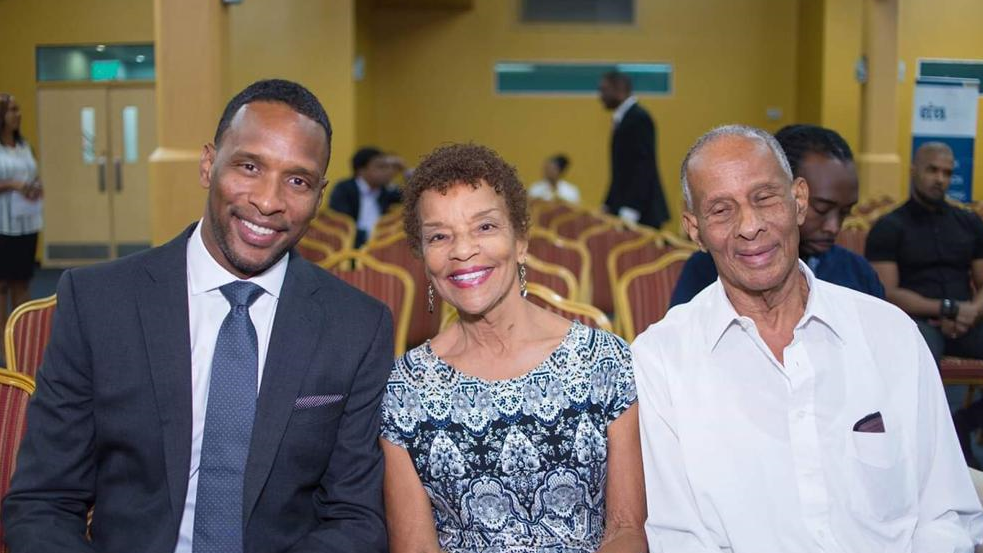
Shaka Hislop is a founding member and honorary president of Show Racism the Red Card, a UK-based anti-racism education charity founded in 1995. A graduate of Howard University, Hislop played professionally as a goalkeeper for Reading, Newcastle, West Ham, Portsmouth and FC Dallas. He played internationally for Trinidad and Tobago international, representing his country at the 2006 World Cup. He now works as a pundit on ESPN FC Daily and hosts a new ESPN+ series, in which he and guests discuss racism in soccer and beyond.
My father was part of the Windrush generation and moved to England from Trinidad in the mid-1960s. One night, he and a friend were arrested by two white police officers, who planted a bunch of keys on them and started breaking car windows. They successfully sued the London Metropolitan Police for wrongful arrest and, with his part of the settlement, dad went back to Trinidad, met my mother and went through law school.
What I learned from my father was that, though the system wronged him, he got involved in trying to make it better. He became a lawyer, a judge, a part of the judicial system in Trinidad. Years later, those life lessons led me to get involved with Show Racism the Red Card. I was playing for Newcastle at the time and began going into schools to talk to young people about our cause.
How things have changed
Looking back 25 years, the language used around social justice was understated and soft, a reflection of how you had to phrase things, how you had to put things across. Back then, you were seen to be speaking out.
Today you can be more direct in what you have to say. Today, there is greater willingness from people, regardless of skin colour, to hear what we have to say. That reflects a greater understanding, but there is so much more to be done.
In February 2018, TV host Laura Ingraham said LeBron James should "shut up and dribble," which reflected what we had been told and what we had been doing for generations, with zero positive impact. LeBron's response effectively was to say that, while we will keep dribbling, we will not shut up and will use our platforms to push for equality and social change.
However, the shooting of Jacob Blake showed that, for all the protests, all the marches, all the kneeling, all the efforts, there was no change, so the next logical step for us as athletes was to stop dribbling. That is why in several sports athletes recently stopped playing as a form of protest. We must be prepared to take similar and meaningful action again. We owe it to our communities and to each other. We owe it to equality and to all of those who continue to be devalued.
What happened to Blake and to George Floyd made me angry. I know the statistics, my father lived it, but this somehow felt different. I tried to avoid watching the Floyd video for a long time. I was trying to figure why it impacted me in the way it did. My eldest daughter recently turned 24 and my son was 13 a few weeks ago.
They are facing the world on their own and having to deal with these incidents. When you are a parent, you think you can protect your kids from these things. When I started with Show Racism the Red Card, I genuinely felt like I could change the world. Some 25 years later, I feel as though I have let my children down; I did not deliver on that promise.
Now they have to go out into this world and, as a parent, you worry. Where do they go? What are they getting up to? What happens if they are pulled over by the police? My wife spoke to my son about what he has to do and how he has to behave and, just because his white friends do something, that does not mean their experience will be the same as his. Having that conversation with him at age 12 was tough.
When I walk into a department store, I always stop and look at the camera so they have a full picture of my face. I might walk around looking at nothing in particular, but I want to say that I have got nothing to hide; I'm not here with anything suspicious in mind. Things like that and keeping your hands visible might seem small, but they help explain what being Black in today's society means.
In March, my family and I took part in a Black Lives Matter march in Boston. It was early in the pandemic so there were health concerns about taking part, but we took precautions and we felt so much better for participating. We were a part of the group -- we were not leaders and just joined in the chants -- and it felt much bigger than ourselves. It was uplifting to me, as someone who has been involved with a similar campaign for most of my adult life, to see the youth, the diversity and the energy in that crowd.
EXCLUSIVE - McKennie offers solutions to racism in football
USMNT's Weston McKennie says he fully supports players walking off the field if they receive racial abuse.
Players are speaking out, getting involved
There is a lot of risk in speaking out and you will be criticized, so I am full of admiration for the actions of Raheem Sterling, Weston McKennie, Jadon Sancho and others; players willing to put everything on the line.
If you do want to speak out, be honest. People respect and will respond to that. Recognise your target audience and find a unified voice; too often campaigns get lost in the vastness of the internet and drown each other out.
Not everyone is comfortable speaking in public or into a camera, though, which is why I am never critical of players who are not as vocal. To those in that category, look for other meaningful ways to support social justice. Financial contributions are one way, but joining in a march can be as important to extend the message that starts with kneeling before games, T-shirts and hashtags.
- Stream Show Racism The Red Card on ESPN+
- More to be done than taking the knee - Ferdinand
- Premier League shirts to say 'No Room for Racism'
Many clubs already do great things in their communities, while Show Racism the Red Card volunteers go into schools and judge art competitions and essay-writing contests. Sometimes, being there and showing support takes no more than your presence.
I know from my own experience that you spend so much time on your craft -- and maybe you have a family at home -- so they become your focus and it is tough to convince them to come out for after-school programs and deal with rush-hour traffic, but players need to make more of an effort to be involved, even if it is once a month or every two weeks.
What players can do is not just support, but drive what is being done. Whatever the issue is that is most important to you, showing up can have an impact. Football has started the conversation and raised awareness. It is the responsibility of players to continue that.
Les Ferdinand: I don't want to wear a badge ... I want change
QPR chairman Les Ferdinand speaks about racism in football in the latest episode of "Show Racism the Red Card" on ESPN+.
What can be done at the top level?
As I was coming to the end of my career, I took courses to earn my coaching badges, but other Black players felt there was no point because they would not get interviews for open jobs. That always stayed with me. Many might consider going into coaching, but here were some incredibly talented footballers, who had seen it all and won it all, who refused to take that next step because they felt they would be overlooked for a backroom staff role or as a youth team coach.
The Rooney Rule, which was established in 2003 by the NFL as a policy that required teams to interview minority candidates for coaching positions, is a step toward dealing with the perception that many Black people in the game have; it would at least increase the pool of candidates and get more feet in more doors.
I do not believe that clubs or leagues should be told they must have a certain numbers of Black managers or assistants, but I do think that, at academy and youth team levels, for example, there can be a certain number. From there, those who do well will get more opportunities; that is how the pipeline can work effectively.
If there still is no great change, the conversation should be revisited, but this would at least be a start and could benefit the game as whole; beyond coaching and management, the knock-on effect could be more opportunities for Black people in boardrooms and front offices at clubs, and on league and national federation executive committees.
Football as a uniting force
As the most popular sport in the world, football is full of people who understand the game's power and try to use it for their own means. One example of a competing agenda against social justice is the argument that there are few other occupations in which Black people can make so much money. Using that to discredit the anti-racism movement is very disappointing to hear and counterproductive to everything I believe.
Football is the perfect vehicle to drive anti-racism issues. Where else in the world is it possible to find someone from Trinidad and Tobago sharing a dressing room with someone from England, from Ireland, from Colombia, from Belgium? And all going out on the field on a Saturday, having to have each other's backs. When I play well, I have to uplift somebody else and, when I am not, I know I can rely on someone else to carry my own burden. We all come off the field with the same result; where else can you get that? To me, that is the foundation of why sport is uniquely positioned.
Marching in Boston reminded me that this is about more than Black Lives Matter; it is about human rights and how uplifting one cause can benefit others. Just being involved is incredibly empowering and as much as the focus always falls upon the basic initiatives and their leaders, the lifeblood is in the people who simply show up.
They say that "a rising tide lifts all boats." My message to those who love the game is simple: Whether you speak out or stay silent, show up and be a part of the movement.
Mithali Raj: India women cricketers 'anxious', 'don't know for what we're training'
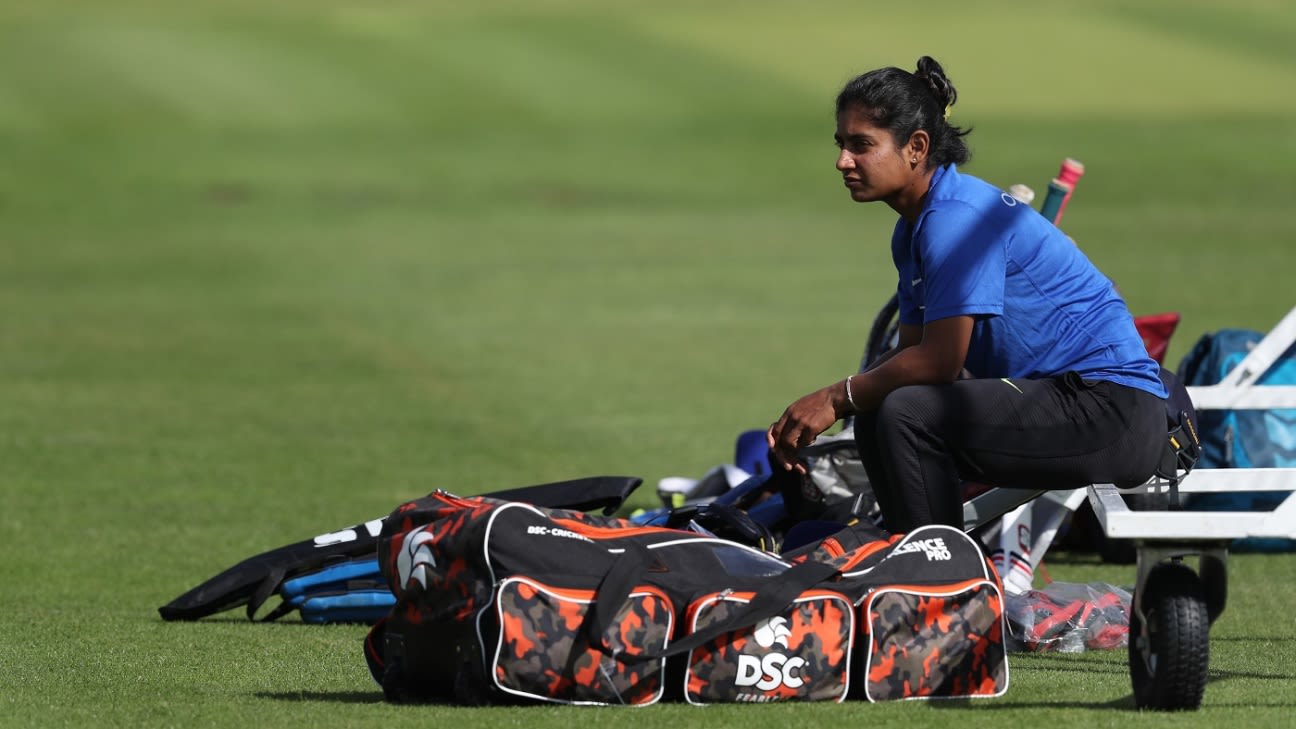
India ODI captain Mithali Raj feels that the national team's players have been grappling with "anxiety" and a lack of "sense of purpose". This comes even as the players look for any "competitive cricket or any international series, even domestic for that matter" in the Covid-19-affected world.
India, runners-up at the T20 World Cup in Australia that ended in March, have not regrouped since, with the BCCI pulling out of the tour of England in July-August and the country's Covid-19 caseload now second-highest globally.
Besides, although the Indian board had announced that a three-team Women's T20 Challenge would be held in the UAE between November 1 and 10, ESPNcricinfo understands that the BCCI is still a long way from finalising overseas participants for the competition. The fate of the proposed bilateral series against South Africa and West Indies, too, remains unclear, with the postponement of the 2021 ODI World Cup further shoving India women's international calendar into uncertainty.
"There's been this anxiety about what's the future, what the future tournaments are because right now we don't know for what we're training," Raj told moderator Lisa Sthalekar during an ICC 100% Cricket virtual discussion. "There needs to be a purpose. Before, we used to plan for any international series if it is an away-going [tour], so players would accordingly prepare. And if it's a home series we prepared accordingly, but now we don't know why we train.
"So, sometimes we do feel there's no sense of purpose if we don't have competitive cricket or any international series, even domestic for that matter."
Having retired from T20Is in September last year, Raj's last international appearance came in November during the ODI series against hosts West Indies. She was due to play the knockouts of the Senior Women's T20 Tournament for her domestic side Railways in late-March but the Covid-19 pandemic put paid to that.
While top-level women's international cricket will return on Monday - hosts England take on West Indies in the first of five T20Is in Derby - Raj said that resumption of training has thrown up new challenges for the Indians.
"Since we are contracted players, that's our job, so being in the bio bubble - if that's what gets us going in terms of the matches, I think as players we are okay with being in the bubble and training and preparing ourselves for the game. Somewhere we need to do a little bit of adjustments to get the matches going."
"But one positive is that things are slowly improving in terms of access to the facilities; but again, there are a few changes in terms of all the training facilities work on time slots. Like, earlier, we would just walk in and start batting and we would have some good 10-15 net bowlers and we could bat for one to two hours," she said. "But, now, you have to go in during the time slot you're given, and maybe the net bowlers are reduced to just two or three of them. So these are the changes as current players we're accepting. But I think [we're] having an optimism that at some point we'll have matches, and that's why all of us are still into our fitness training trying to keep up to the standards before we were in the lockdown."
As such, women's cricket in India has had several issues since the end of the T20 World Cup. The national team has been without a selection committee since the world tournament, the competition also officially marking the end of their long-time manager Trupti Bhattacharya's tenure. Saba Karim's departure as the board's general manager (cricket operations) in July further meant India women are without both an administrative as well as a managerial pointsperson. The tenure of their head coach, WV Raman, who was appointed on a two-year contract in December 2018, is also nearing its close.
While the announcement of the T20 Challenge in August promised game-time for both the centrally contracted players as well as many others, it ruled out at least four top-flight India internationals from the upcoming Women's Big Bash League in Australia. By extension, the availability of several international stars, especially those from Australia, New Zealand, South Africa and England, for the T20 Challenge has been rendered close to impossible.
When asked if India's contracted players had concerns over the seclusion that life in a biosecure bubble brings with it, Raj said that flexibility and looking after the inexperienced crop of players, including Shafali Verma, is the need of the hour.
ALSO READ: Cricket for some, not for all - where does the women's game stand?
"Since we are contracted players, that's our job, so being in the biobubble - if that's what gets us going in terms of the matches - I think as players we are okay with being in the bubble and training and preparing ourselves for the game. Somewhere we need to do a little bit of adjustments to get the matches going," Raj said. "As far as the mental set-up is concerned, we did have a few sessions with a sports psychologist: talking to the players, as a team [too], we were on calls. Those things do help [because] as seasoned, as senior players we understand how to tune ourselves. But the most important thing in the current situation is the young players or the players who are in the age-groups, who've just made their debut. For them it's even more important to settle their anxieties and anxiousness they develop thinking about their future.
"If you're a young player, you'd definitely want to know, 'I just made it into the Indian team; what's the next opportunity I will get?' These are questions that the young players usually go through. Not everyone still has access to training facilities... Again, how do you prep such young players? That's where the support staff and sports psychologist and come into play, to give them a lot of positivity and keep their hopes us [so that] they keep training."
Raj said while logistical challenges facing the BCCI remain a concern as far as ensuring playing time for its women cricketers go, physical reassembly of the players is paramount to ensuring India Women's return to action.
"I believe so [that things need to be changing]. We do have regular calls with the BCCI officials to see what we can plan in the future. Then again, a lot of these itineraries depend on the situation in the country. Like, in India, there are still a lot of cases; we are actually on the rise in terms of cases, so it's very difficult for the board to again get the girls going because all of us come from different parts of the country and there are some amount of risks involved in travelling.
"Getting so many girls to have a camp is something the BCCI is looking into, trying to organise if they can. It may be a series or some sort of a camp in terms of fitness, so that the girls regroup again. It is very important; I understand that's there's been a good four or five months' gap since the T20 World Cup in March and now we're into September.
"We have been in touch with the support staff and players on calls. But we sort of gel only when we meet. And I've seen that the WBBL is happening on time, but with some rules and regulations which is paramount. West Indies are in England for a series. Let's see how these things get on. Probably that will give us some idea of organising an international series in the coming months for India."
England win toss, bat against West Indies, Tammy Beaumont to open with Danni Wyatt
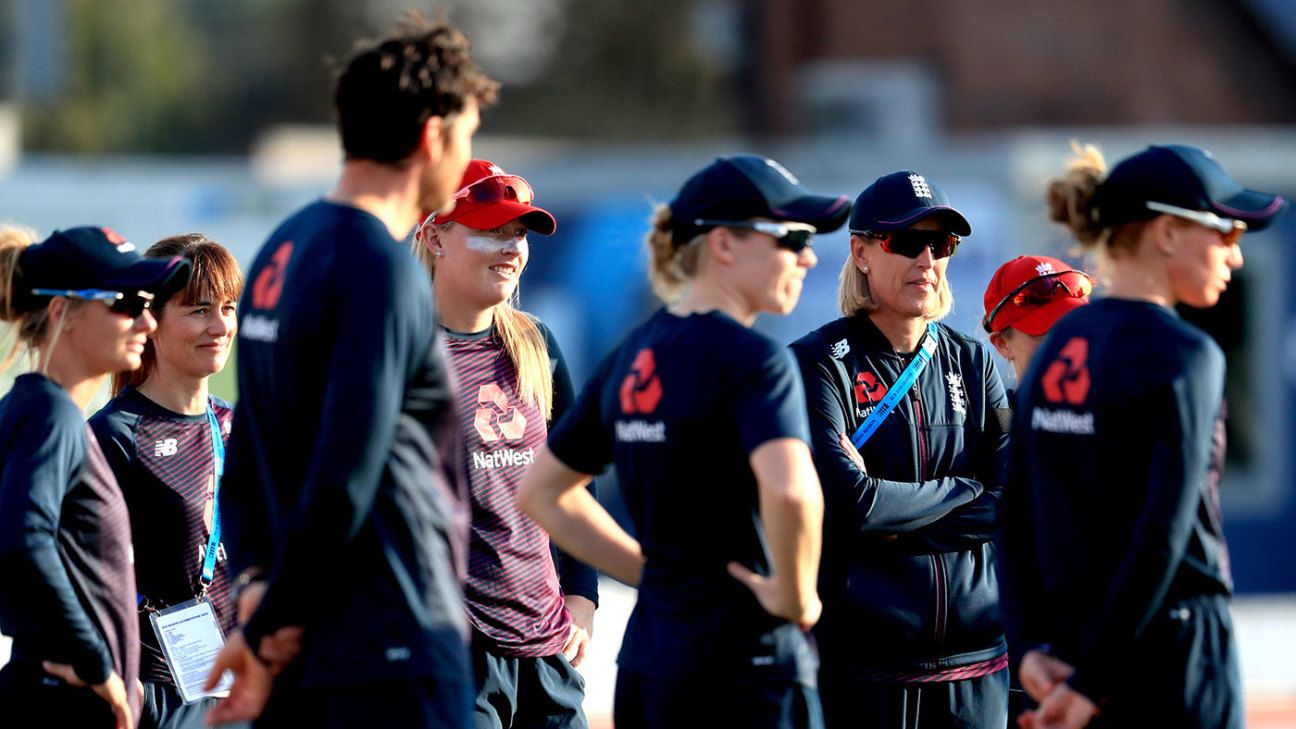
England win toss, bat vs West Indies
England women won the toss and elected to bat first in the opening T20I of their five-match series against West Indies.
It is the first international match between top-level women's teams since the T20 World Cup final in early March, when Australia defeated India in front of more than 86,000 people at the MCG. This will be vastly different, behind closed doors at Derby's Incora County Ground, but is a welcome return to action after England faced the prospect of playing no international cricket following the collapse of planned tours by India and South Africa in the wake of the Covid-19 pandemic.
Both teams are wearing the Black Lives Matter logo on their shirts as part of their combined commitment to support the movement, which also includes taking a knee before play in each of their matches throughout the series.
Tammy Beaumont and Danni Wyatt will open as England stick with the same team that played West Indies in their last encounter, during the group stages of the T20I World Cup. Beaumont's promotion back up the order then followed a period of acting as a floating batsman during the earlier matches in the tournament.
Deandra Dottin returns at the top of West Indies' order as she continues her comeback from shoulder surgery, while captain Stafanie Taylor, who was stretchered off with a groin injury during that World Cup match against England, is fully fit and back at No. 3.
England: Danni Wyatt, Tammy Beaumont, Nat Sciver, Heather Knight (capt), Fran Wilson, Amy Jones (wk), Katherine Brunt, Anya Shrubsole, Mady Villiers, Sophie Ecclestone, Sarah Glenn.
West Indies: Hayley Matthews, Deandra Dottin, Stafanie Taylor (capt), Shemaine Campbelle (wk), Chinelle Henry, Britney Cooper, Lee-Ann Kirby, Aaliyah Alleyne, Afy Fletcher, Shamilia Connell, Shakera Selman.
MRI confirms Giants RB Barkley has torn ACL
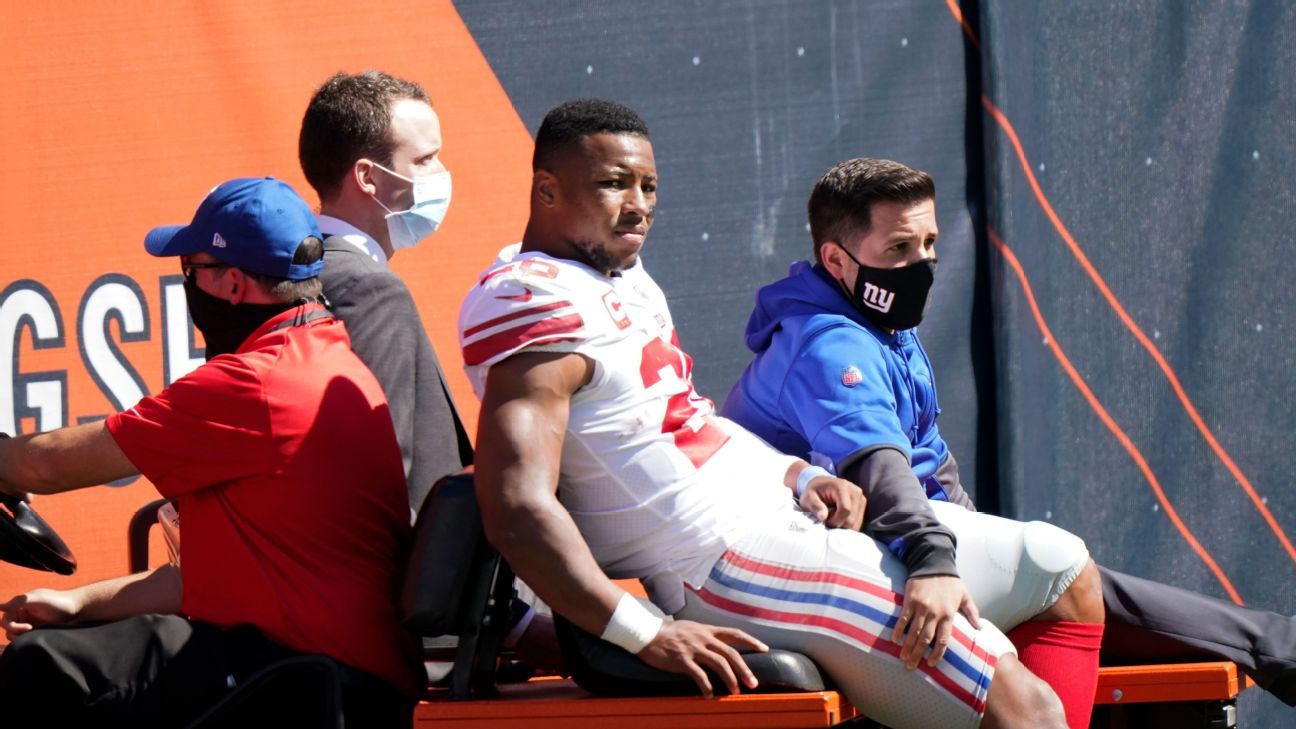
EAST RUTHERFORD, N.J. -- Tests on Monday confirmed that New York Giants running back Saquon Barkley has a torn ACL in his right knee. He will miss the remainder of the season.
Barkley underwent an MRI at the Hospital for Special Surgery in Manhattan the day after he was injured during a 17-13 loss to the Chicago Bears. He will undergo surgery in the "near future" according to the team.
Wide receiver Sterling Shepard is dealing with turf toe that forced him from the second half of the game. He will likely miss time, a source told ESPN.
The Giants knew that losing Barkley for the season was the likely outcome. Former Atlanta Falcons running back Devonta Freeman is set to visit Tuesday, according to sources.
Freeman, 28, rushed for 656 yards and a pair of touchdowns last season. Dion Lewis and Wayne Gallman are likely to split the workload in the meantime.
Barkley was hurt as he ran toward the sideline Sunday in Chicago and was tackled by Bears safety Eddie Jackson. Barkley grabbed at the knee as he was headed to the ground.
Barkley was later carted to the locker room and slammed his fist in disgust. He had four rushes for 28 yards before exiting. His season ends with 19 rushes for 34 yards and no touchdowns.
It's now onto next season for Barkley, who becomes eligible for a contract extension at the end of this year. This naturally becomes a roadblock. He will face an extensive rehab with the goal of being back by the start of next season.
Barkley scrubbed his Instagram account Sunday night after the injury and left one post -- a picture commemorating his sports idol, Kobe Bryant. The caption ends with the hashtags #mambamentality and #forever. Barkley later retweeted a tweet from Complex Sports noting he deleted all of his posts on IG except for the picture of Kobe and #MambaMentality.
One of the biggest concerns teams have with running backs who tear their ACL is the vulnerability of their other knee once they return. Best-case scenario is that Barkley is like Adrian Peterson. The current Detroit Lions running back tore his ACL in 2011 at 26 years old. He returned for the start of the following season and had the most productive year of his legendary career with 2,097 yards rushing for the Minnesota Vikings.
Peterson tweeted encouragement to Barkley on Sunday:
.@saquon a born winner!! The comeback is going to be scary ?
— Adrian Peterson (@AdrianPeterson) September 20, 2020
Giants coach Joe Judge envisions something similar from Barkley.
"Don't fall asleep on 26," Judge said. "It's going to be a hell of a story either way."
Barkley, 23, has rushed for 2,344 yards on 497 carries his first three professional season after being selected with the second overall pick in the 2018 NFL draft.
After a huge rookie season in which Barkley accumulated more than 2,000 total yards from scrimmage, he was hampered by a high ankle sprain last year. He missed three games and was not at 100% in several others.
Barkley was healthy throughout the summer and confident for a big year in offensive coordinator Jason Garrett's offense after seeing the success Ezekiel Elliott had with him in Dallas. The Giants built their offense around Barkley, the talented back whom general manager Dave Gettleman considered a transcendent talent and future "gold jacket" player when he was drafted.
Barkley seemed destined to have a massive year as the centerpiece of the Giants' plans, even if their Monday night opener against the Pittsburgh Steelers was a disaster. He had 6 yards on 15 carries and was hit at or behind the line of scrimmage on 11 of those touches.
Now, the Giants will have to recalibrate their offense without their top playmaker and hope he returns to his previous form by the start of next season.
"I mean, he's Saquon Barkley. You lose a guy like that, it's a huge loss," said Lewis, who took Barkley's spot in the lineup Sunday and rushed for a touchdown. "As a team, everybody has to step up. Receivers got to step up. O-line has to step up. The running backs have to step up. The quarterback has to step up. Defense has to step up. It's not going to be one person step up to make up for what he's done. It's going to take all of us."
LSU picks Brennan to succeed Burrow at QB
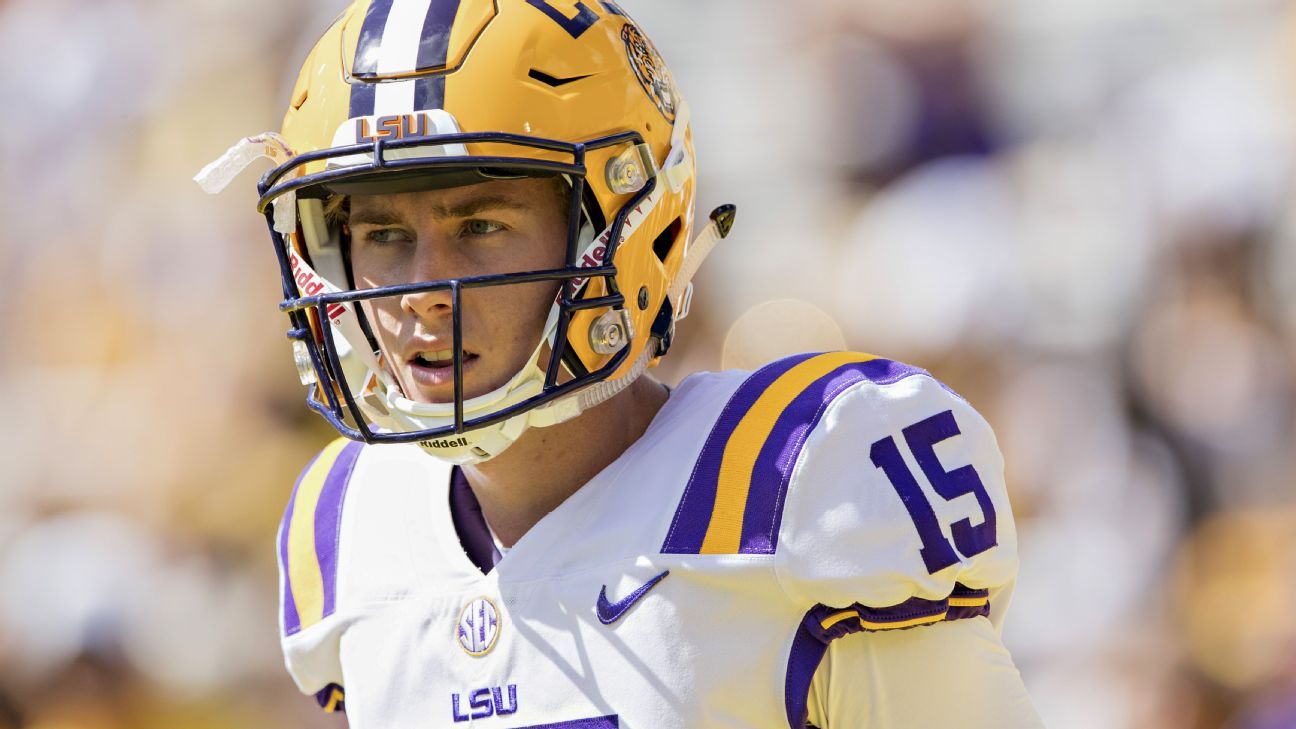
LSU has named Myles Brennan the team's starting quarterback when it opens the season on Saturday at home against Mississippi State.
Brennan steps in for Joe Burrow, who threw for 76 touchdowns and had perhaps the best single-season in college football history last season. Burrow, a former transfer, won the Heisman Trophy and led the Tigers to the national championship before being selected No. 1 overall in the NFL draft by the Cincinnati Bengals.
A junior from Mississippi, Brennan has appeared in 17 games in his career, including 10 games last season.
Coach Ed Orgeron lauded Brennan's accuracy and said that his arm strength might be better than Burrow's.
"I've always believed in Myles Brennan," Orgeron said.
He later added: "The only thing we don't know -- and we do believe he'll do very well -- is how he'll do under fire."
LSU heads into the season opener down 19 starters from last year's team, including star wideout Ja'Marr Chase.
Sources: Broncos WR Sutton (ACL) done for year

ENGLEWOOD, Colo. -- The 2020 season is all of eight quarters old and the Denver Broncos are already without many of their top players.
Wide receiver Courtland Sutton suffered a torn ACL in Sunday's 26-21 loss to the Pittsburgh Steelers, sources confirmed to ESPN Monday morning, and he will miss the remainder of the season. Sutton had missed the season opener with a right shoulder injury suffered Sept. 8 in practice and had been limited in practice in the days leading up to Sunday's game.
Additionally, Broncos quarterback Drew Lock is expected to miss at least two weeks with a severe strain of the rotator cuff in his throwing shoulder, an injury he suffered in the first quarter Sunday.
Lock and Sutton join a Broncos injury list that includes linebacker Von Miller (ankle surgery) and running back Phillip Lindsay (toe). Miller could miss the remainder of the season, while Lindsay, who sat out Sunday, is expected to be sidelined for multiple weeks.
Sutton was already a significant question mark to play Sunday because of the shoulder injury, but he showed the team enough in Friday's practice and felt good enough Saturday to play Sunday. His last catch of the game came with 6 minutes, 23 seconds left in the second quarter when he reeled in a 45-yard pass from Jeff Driskel.
Game video shows Sutton limping slightly after the catch -- he got tangled with Steelers cornerback Joe Haden as the two fell to the ground -- but Sutton stayed in the game. He was the intended receiver on Driskel's interception, by Haden, with 2:09 remaining in the first half.
Sutton, who had three receptions for 66 yards, played 31 plays in the game. The third-year receiver made his first Pro Bowl trip last season, as an injury replacement for DeAndre Hopkins, when he finished 2019 as the team leader in receptions (72), receiving yards (1,112) and receiving touchdowns (six).
An already young Broncos offense will now feature one of the youngest wide receiver groups in the league as three rookies -- Jerry Jeudy, KJ Hamler and Tyrie Cleveland -- will get plenty of work in the weeks ahead. Jeudy, the team's first-round pick in the 2020 draft, is currently second on the team in catches and receiving yards.
Waiver wire for Week 3: Devonta Freeman, Dion Lewis among top pickups

We're prone to hyperbole in analysis, as it's hard not to overreact in a day and age when everyone is one 280-character Tweet away from chiming in on the topic du jour.
However, it doesn't feel like hyperbole to suggest that Sunday of Week 2 was one of the most consequential days of injuries that we have seen in years. Maybe decades. It was carnage on Sunday, led by the devastating news that Saquon Barkley is expected to miss the rest of the 2020 season because of an ACL tear, per Adam Schefter and Jordan Raanan.
With so many injuries, this week's waiver wire column is longer than normal. Here it goes.
Note: All players in this column are available in at least 50% of leagues on ESPN.com.
Mike Davis, RB, Carolina Panthers (8.0%): Davis won the backup job to Christian McCaffrey with a strong training camp and was thrust into action after McCaffrey left Week 2 due to an ankle injury. Davis hauled in eight catches while the Panthers tried to play catch-up, a strength of his overall game. McCaffrey will now miss multiple games due to a high ankle sprain, and head coach Matt Rhule expressed confidence in Davis as the starter until CMC's return. He's the add of the week and has possible weekly value in the top 18-25 among running backs.
Dion Lewis/Wayne Gallman, RB, New York Giants (0.8%/0.4%): Who is up next behind the injured Barkley on the New York Giants' depth chart? It's unlikely that Lewis will have the backfield to himself in New York, as Gallman (another waiver-wire add) will certainly be busy for the G-Men too. I'd urge you to consider either Giants running back, with the nod to Lewis, given his passing game acumen (he's a nifty pass-catcher) and the fact that it was he who took over for Barkley post-injury in Week 2 (Gallman was a healthy scratch). Both players should be added for now.
Darrell Henderson Jr., RB, Los Angeles Rams (45.7%): Following injuries to Cam Akers and Malcolm Brown (finger, which came late in the game), Henderson's role in the Rams' backfield ballooned in Week 2. For now, the status of Akers (ribs) and Brown is unknown, which could lead to a sustained role for Henderson -- a third-round pick in 2019 -- going forward. He rushed 12 times for 81 yards and a touchdown, while adding two catches and 40 yards in Week 2. A talented player to add in all leagues.
Devonta Freeman, RB, free agent (7.5%): For the first time in my handful of years writing this column, I'm advocating for a player who doesn't even have a team. Why? Well, Freeman just feels bound to find work soon, given the rash of running back injuries around the NFL -- he's already working out for the Eagles early this week, with a visit planned for the Giants as well. In the right spot, he could become an immediate fantasy contributor. There may be no better place now than the G-Men.
Marquez Valdez-Scantling/Allen Lazard, WR, Green Bay Packers (16.8%/33.7%): After Davante Adams left the Packers' game due to a hamstring injury, these two young wideouts were counted on even more to step up. MVS and Lazard both had nice Week 1 efforts and posted three catches apiece on Sunday. I'll give the edge to MVS as my preferred add due to slightly more vertical-play upside, but the reality is that if Adams has to miss time, both of these players will be involved quite a bit.
Corey Davis, WR, Tennessee Titans (27.2%): Davis had three catches in Week 2, including one for a touchdown. He has strung together back-to-back double-digit fantasy points performances, and there's still no denying how much natural talent he possesses. With A.J. Brown dealing with a knee injury, Davis figures to stay busy in a Tennessee offense with a red-hot quarterback dealing.
Jerick McKinnon RB, San Francisco 49ers (18.9%): Start by checking to see if teammate Tevin Coleman is available (at last check he was around in about 47% of leagues), as Coleman took over as the primary ball carrier after an injury to Raheem Mostert in Week 2. While Coleman was inefficient, he would figure to be a better bet to lead the team in carries over McKinnon because the team must remain smart while managing his workload. But McKinnon showed great burst in Week 2 and is such a useful pass-catcher that he's worth the speculative add.
Russell Gage, WR, Atlanta Falcons (20.0%): Rare is the offense that can support three wide receivers weekly in fantasy football, but the Falcons might fit the bill. Gage followed nine catches in Week 1 with another six in Week 2, good enough for 46 yards and a touchdown. Get this: Gage also nearly added another six points as a thrower, as he dropped a dime on a designed pass that Julio Jones should have caught for a nearly 50-yard touchdown. A deeper-league add who will keep finding a way.
Myles Gaskin, RB, Miami Dolphins (12.4%): I'm going to throw the flag on myself for not having Gaskin in the column last week -- colleague Mike Clay was smart to urge me to consider this -- as I wondered whether he would truly be the lead back for the Dolphins. It sure appears that is the case, as Gaskin had seven carries but more importantly six catches in Week 2. I'm not sure he'll be a consistent top 25 play for me, but running back depth is so, so thin in fantasy football that Gaskin should be rostered in all leagues.
Joshua Kelley, RB, Los Angeles Chargers (26.4%): The Chargers have two talented backs and Kelley's workload is impossible to miss: He handled 23 carries in Week 2 and rushed for 64 yards. While Austin Ekeler is the clear-cut top back in this backfield for fantasy purposes, there's so much to like about Kelley's game and role already. An add in all leagues as well.
Mecole Hardman, WR, Kansas City Chiefs (43.0%): Sammy Watkins left the game in Week 2 after taking a massive hit and sustaining a head injury. Hardman figures to be much more involved if Watkins is unable to play in Week 3, and many already know this: Hardman is a big play waiting to happen. He'll likely be at best third in line for targets most weeks, but that's certainly still good enough when you catch passes from Patrick Mahomes.
Mike Gesicki, TE, Miami Dolphins (48.1%): I'm not sure if a Mike Gesicki fan club exists in a formal capacity, but I'll soon be a card-carrying member if it does. Gesicki has just an absurd catch radius and is tremendous in the red zone, as was evidenced again in Week 2 with his 130-yard performance. It's very difficult to find a reliable player at tight end, but Gesicki is a player to strongly consider if you're struggling to find it early. Gesicki has some sincere weekly upside.
Jonnu Smith, TE, Tennessee Titans (38.4%): Another quality tight end on the waiver wire, as Smith is such a tremendous athlete and very good after the catch. He scored two touchdowns in Week 2, giving him three for the season. The Tennessee offense is once again looking sharp, so don't be surprised if Smith's surge continues.
Jordan Reed, TE, San Francisco 49ers (5.6%); Dalton Schultz, TE, Dallas Cowboys (.9%); Mo Alie-Cox, TE, Indianapolis Colts (.5%): Yes, I'm listing three players at once for this blurb, as each had an awesome Week 2, but with two tight end adds above whom I feel better about, I don't want to overdo it here. George Kittle could return soon for San Francisco -- same goes for Jack Doyle in Indianapolis -- and Schultz is an athletic and rising player, but Dallas does have three excellent wideouts who will get theirs too.
Monitor the quarterbacks: It's hard for me to suggest making a move at quarterback, given how well the expected stars have been so far. No consensus top-10 quarterback is causing me major strife so far, so the names below are worth monitoring in case you're looking ahead to bye weeks or for depth.
Ryan Tannehill, QB, Tennessee Titans (34.4%): If there are naysayers left, the pool is dwindling. Tannehill is averaging close to 22.5 points per game early on this season.
Gardner Minshew II, QB, Jacksonville Jaguars (19.3%): This might be my favorite player in the NFL, which is reason enough to consider adding him. Oh, by the way, he has back-to-back games with 20-plus points.
Joe Burrow, QB, Cincinnati Bengals (45.2%): It wasn't a very efficient night in Week 2, but we saw some glimpses of what gives him a chance to be so special in this league.
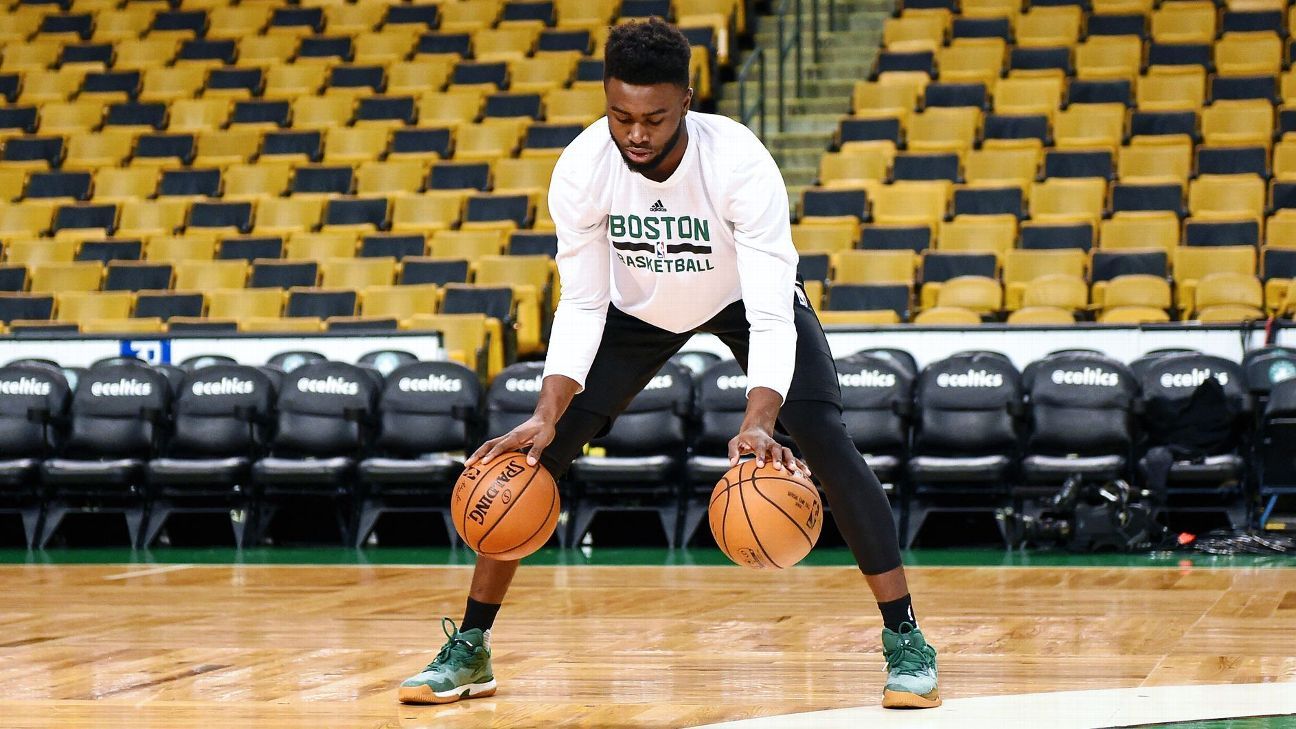
ON THE FIRST floor of a gray, block-like, four-story structure on the campus' northwest corner, a dozen students shuttle into a three-hour class taught once a week on Monday mornings. It's the early fall of 2015, and inside Tolman Hall, the longtime home of the University of California at Berkeley's Graduate School of Education, professor Derek Van Rheenen is set to lead graduate-level students in a course that he has taught for about two decades: Education 257: Theoretical Foundations of the Cultural Studies of Sport in Education.
Except now, for the first time, there's an 18-year-old freshman present.
Jaylen Brown, a highly touted basketball player from Georgia, has campaigned to take Van Rheenen's class, even asking former Detroit Pistons star Isiah Thomas to lobby on his behalf to the dean of the College of Letters and Sciences. Thomas had taken the class years prior when he completed his master's degree at Cal.
Permission granted, the 6-foot-7 Brown towers over classmates several years his senior. Everyone sits at long tables positioned like a box around Van Rheenen, and Brown sits on the right side. He does not miss a class, sometimes arriving on a two-wheel standing scooter. He asks questions and is deeply engaged.
Initially, Van Rheenen had marveled at Brown's curiosity and drive to be challenged intellectually; to take a heavy course load that focused on race, poverty, inequality, social injustice; to surround himself with mentors who had roots in Berkeley and its foothold within activism and the civil rights movement. Brown had submerged himself in the campus culture, devouring as much knowledge as possible, churning out essays, blazing through books, conversing with his professors after hours -- all while balancing his role on the men's basketball team.
As the weeks continued, Brown developed a deeper sense about the history of race in America; about the social constructs that perpetuated inequality; about the division and lack of opportunity. In sports, he learned more about privilege and exploitation: For instance, how Black athletes were typically praised for athleticism while IQ was cited for white athletes. He read how athletes often weren't accepted as public intellectuals or scholars. He kept pushing, wanting to learn more while fighting the stigma that he was just an athlete passing through en route to the NBA and its paychecks with several zeros.
"Jaylen wanted to be thrown to the wolves, intellectually, and to really fight to find his intellectual identity in his first term," Van Rheenen says. "So he had to fight to demonstrate -- I'm not kidding -- 'You know, I chose to be here because I want to get a genuine education. I want to be challenged.'"
While Van Rheenen saw that Brown was gaining knowledge at an intense pace, and could see how a young, prominent Black male athlete who hailed from the South was learning more about extensive histories and systems that were tied specifically to him and his background, on one particular Monday, Van Rheenen could also look at Brown's face and see the overall toll.
"He was exhausted," Van Rheenen recalls. Later that night, Cal's men's basketball head coach, Cuonzo Martin, called Van Rheenen just to check in, because he, too, could see at practice that day that Brown seemed out of sorts. "Not physically exhausted," Van Rheenen points out, "but he was spiritually and emotionally exhausted from the intellectual journey he was on."
Just five years later, that journey would lead Brown to the forefront of arguably the most intense intersection of sports and race in NBA history, and a flash point in American history itself.
NBA PLAYOFFS: Latest updates, schedule and more
Jaylen Brown, Malcolm Brogdon lead peaceful protest in Atlanta
Georgia natives Jaylen Brown and Malcolm Brogdon protest police brutality in Atlanta.
IN SUCH AN outspoken league, the 23-year-old Brown has become one of the NBA's most demonstrative players. It's clear why the Boston Celtics guard is not just a thoughtful player in this moment but one for this moment.
He drove 15 hours through the night to join a peaceful protest in his home state of Georgia. He has called for the reenactment of the George Floyd bill to combat police misconduct. On multiple occasions, he has spoken at length about justice for Breonna Taylor.
During an emotional meeting after the players went on strike following the shooting of Jacob Blake, Brown told fellow players in the NBA bubble that they should leave only if they intended to actively protest racial injustice and police brutality in their home markets or elsewhere.
"I get this question a lot: 'Jaylen, what do you identify as? The intellect? Or do you identify as an athlete?'" Brown said during a 2018 talk at Harvard's Graduate School of Education. "And, to be honest, I never give anyone a straight answer because I hate the dichotomy of it. I hate the fact that it has to be one or the other. I hate the fact that there's no possibility for both."
Brown grew up in a single-parent household in Marietta, Georgia. His mother, Mechalle, emphasized to his older brother, Quenton, and Brown that compassion and activism were worthwhile pursuits. "Speak up for yourself," she would say, "and speak up for others who may not be able to speak up for themselves."
There was another emphasis that Mechalle hammered home: higher education.
Mechalle earned two degrees, a Bachelor of Science from Michigan State and an MBA from American InterContinental University, and the inner and outer rings of their family were populated with relatives who were educators, doctors and lawyers. Jaylen would be the fourth generation who would head to college -- of that there was no doubt. Now a professor of marketing communications at Cambridge College in Boston, Mechalle says of education, "That's the family business."
In high school, Brown gained acclaim for basketball. He visited powerhouses Kentucky, UCLA, Kansas, North Carolina and Michigan. But some other things happened during high school: Trayvon Martin was fatally shot by George Zimmerman; Michael Brown was fatally shot by a police officer in Ferguson, Missouri; and Eric Garner died on a Staten Island sidewalk after a police officer tightened a choke hold around Garner's neck while Garner repeatedly stated, "I can't breathe."
In the modern era, these deaths served as critical boiling points of race, police brutality and social injustice in America, and they left an indelible mark on Brown. "So, as I'm choosing the school, as I'm making a life decision, all of this is in the back of my head," he said during a TED Talk in 2020. He had come to know a former star basketball player from his hometown and high school, Shareef Abdur-Rahim, who played for more than a decade in the NBA. Though they never talked much about college choices, Brown's focus turned to Abdur-Rahim's alma mater, UC Berkeley, a school that was by no means a basketball powerhouse. But it was the No. 1 public university in the country. Brown paid for his own visit to the school, having used his five allotted visits elsewhere.
But he wasn't just going to a world-class institution of higher learning. He was going to Berkeley, where Dr. Martin Luther King Jr. spoke to a crowd of thousands in 1967; where the student-led Free Speech Movement of the era was born; where the Black Panthers organized; where rallies, seminars and peaceful protests helped establish a global reputation as a heartbeat of free speech and activism against social injustice. When Dr. Ameer Hasan Loggins, who taught a class on Black representation in the media, met Brown in a recreation center gym on campus, he recalled Brown saying, "I came out here on my own dime. And I came out here because I want the intellectual rigor, but also want to be involved in the culture of the Bay Area."
When Hashim Ali, a Cal alum who co-founded the AAU Oakland Soldiers, met Brown, he asked him to name the last book that he read. Brown replied, "The Egyptian Book of the Dead." Ali's eyebrows rose. Brown, he realized, was different.
Brown built a circle of advisers that included Loggins, Abdur-Rahim, Thomas, Van Rheenen and Ali. He interned under venture capitalist Erik Moore at Base Ventures, where Brown learned about technology and investing and sat in on meetings in which companies pitched themselves.
He audited Loggins' class, just as Colin Kaepernick had before him. He spent hours conversing with Dr. Hardy Frye, a professor who participated in the civil rights movement and marched with the SNCC (Student Non-Violent Coordinating Committee) in the 1960s.
"He was just literally in a bubble of everything at once," says Brown's brother, Quenton.
The first time I hung out with Jaylen Brown @FCHWPO he was an 18 or 19yr old freshman. My first thought was he should forget wasting time in the NBA and just run for the Senate. But then I remembered Bill Bradley and thought...(shrug) why not just do it all?
— Counting Crows (@CountingCrows) November 13, 2017
But Basketball Hall of Famer Thomas is clear on one point -- the credit belongs to Brown.
"You can lead a kid to the library," Thomas says, "but you can't make them read."
Brown would leave after his freshman season, but he carried Berkeley with him.
"Jaylen has been having college-level conversations with professors ever since then," says Loggins, a writer and lecturer at both UC Berkeley and Stanford University. "The educational process is not limited to the campus space. Jaylen has continuously been educating himself and having one-on-one conversations. So, if anything, you could almost look at it like -- Jaylen may have left college campus, but he's been doing office hours every f---ing year. He's still reading books. He's still taking suggestions. He's still working through ideas with academics, with activists, with grassroots organizers."
"He grew up as a person even in that one year," Mechalle says. "It was the best place for him."
MICHELE ROBERTS WAS looking for Jaylen Brown. As a fellow Cal alum, she had designs on befriending him. So at the Hilton Hotel in Midtown Manhattan before the 2016 NBA draft lottery, where Brown was in attendance, they met. Brown began telling Roberts, the National Basketball Players Association executive director, how he wanted to be involved in the NBPA. "I was completely floored," Roberts says.
Roberts had never before -- or since -- heard an incoming rookie say he wanted to be involved in the union. Some rookies don't even know that there is a union, but there was Brown, wanting to be involved at a top level. So he became the youngest vice president in their history, at 22, and he has been consistently active on calls and in meetings. He has plans on becoming its youngest president ever, and, Roberts says, "He's absolutely on track."
"He is a phenomenal member of our executive committee," Roberts continues. "Thank god he's interested, because he's exactly the kind of guy that you want to have: young, bright and has a lot of respect already from his peers -- both his biological peers and the vets. And he really doesn't have any problem with -- and in fact is anxious to -- roll up the sleeves and do the work. But he's delightful. And then he can hoop! It's amazing. He's a complete package."
Yet before the Celtics drafted him, one bit of feedback in their background checks seemed surprising -- NBA talent evaluators kept suggesting Jaylen Brown might be too smart for basketball.
"Some of the things that came out about Jaylen, believe it or not, are interpreted negatively because he's such a studious kid," recalls Danny Ainge, the Celtics' president of basketball operations. "'He knows more than others' and 'he thinks he knows it all' -- things like that because he was a smart kid. It wasn't always conveyed in a real positive way."
There was chatter about Brown wanting to do things beyond basketball, that maybe basketball wasn't his biggest focus. And, indeed, he is eclectic. He taught himself Spanish, has studied Arabic, can play the piano, guitar, likes philosophy and meditation and hot yoga. He likes "saging the air," which he learned at Cal. He keeps a journal. He didn't hire an agent to represent him heading into the draft, instead relying on his circle of advisers.
Almost immediately after his final game for UC Berkeley, Brown plotted out on a calendar the dates and objectives. He kept in a binder of long-term objectives that were months and years ahead. He took notebooks with him to interviews so that he could take notes on the NBA general managers who were interviewing him during the pre-draft process.
"I never really thought that he's too smart for basketball," Ainge says. "There's plenty of time to be lots of things in an NBA world and NBA life, and there's a lot that you're capable of doing and balancing and there's multiple things that you can do and plenty of time to spend off the court. And Jaylen has been fantastic in our community from the day he's got here. He practices what he preaches."
From the first time he met Brown, Ainge says he could tell there was more substance to him than most people Brown's age, which is a common theme from those around Brown: They often have to remind themselves that they're speaking to someone so young because he doesn't sound young at all. Ainge raved about Brown to head coach Brad Stevens constantly, to the point that Stevens had little doubt which direction the team was going in the draft.
For Stevens, few concepts in life are more important than "growth mindset," the idea of constantly improving one's intelligence through hard work and education, articulated in the book "Mindset: The New Psychology of Success" by professor Carol Dweck. Stevens recommends her book often and has given it out to his team over the years. In his first meeting with Brown during the pre-draft process, this concept came up. Brown had already read the book. He knew it well.
"We talked about 'growth mindset' and always wanting to improve," Stevens says, "and he probably embraces that as much as any player I've been around. He takes everything as learning."
Brown's Twitter and Instagram handles are FCHWPO: Faith, Consistency, Hard Work Pays Off.
During Brown's rookie season in Boston, Abdur-Rahim attended a game and walked with Brown to the parking lot afterward. Staring at Brown's car, the former Vancouver Grizzlies draftee thought back to his career. He, like Brown, hailed from Marietta, attended Wheeler High School and played only one year at Cal before going pro. And, like Brown, Abdur-Rahim was drafted No. 3 overall. But Abdur-Rahim couldn't wait to buy an expensive car after being drafted -- and so he did. But here was Brown's car, and it was modest. "Not a Toyota hatchback, but something very practical," Abdur-Rahim says.
"He's a smart person -- and wise. I think 'wise' is different than 'smart,'" Abdur-Rahim says. "He's right for this time. He's measured. He's really ahead of his years."
THE LOVE FOR basketball traces back to Brown's infancy, according to his mother, when a ball rolled by him as a 9-month-old on their carpeted living room floor in Georgia. But a love for a different game developed in Brown's formative years that, those around him say, shaped him as much as anything. At some point before he turned 10, Brown's grandfather taught him to play chess, and the game stuck. He played through grade school, became president of the chess club in high school, then challenged elders at a cafe in Berkeley.
But Mechalle noticed that from an early age, chess reengineered the wiring in Jaylen's brain. He began to view things more methodically, as if he were planning out not just one move but several moves ahead. He started strategizing. "Chess helped me see like the long [view], the end game," he said in 2018 at the MIT Media Lab. He took a chess class as an elective at Cal. He titled a YouTube series during his rookie year with chess moves.
Says Van Rheenen, "Chess serves as a metaphor for Jaylen, as he navigates the world and even the basketball court."
It's fitting, then, given what Brown submitted as his final assignment for Van Rheenen's graduate class. The task was to write a "personal athletic academic autobiography" that served as a narrative of their athletic experiences up until the present. It asked students to think of critical incidents that have helped define who they are and who they see themselves becoming. It was 20 pages long, and, Ali says, Brown wrote his paper through the lens of chess.
"He has every part of his life broken down into a chess move," Ali says. Van Rheenen will not betray specifics, except to say that Brown could and should turn it into a book. But what he does say, what many around Jaylen Brown say, is that his next move will be strategic and well thought out, as if he has been planning it for years.
"I believe his greatest impact, as good as he has been at basketball, won't be on the court," Stevens says. "It's one of the many things I really love about him and really think so highly of about him. He cares about what's right. He's going to voice his opinion. And if he doesn't know something, he's going to learn it."
FROM THE ARCHIVES: Jaylen Brown is the Celtics' surging star
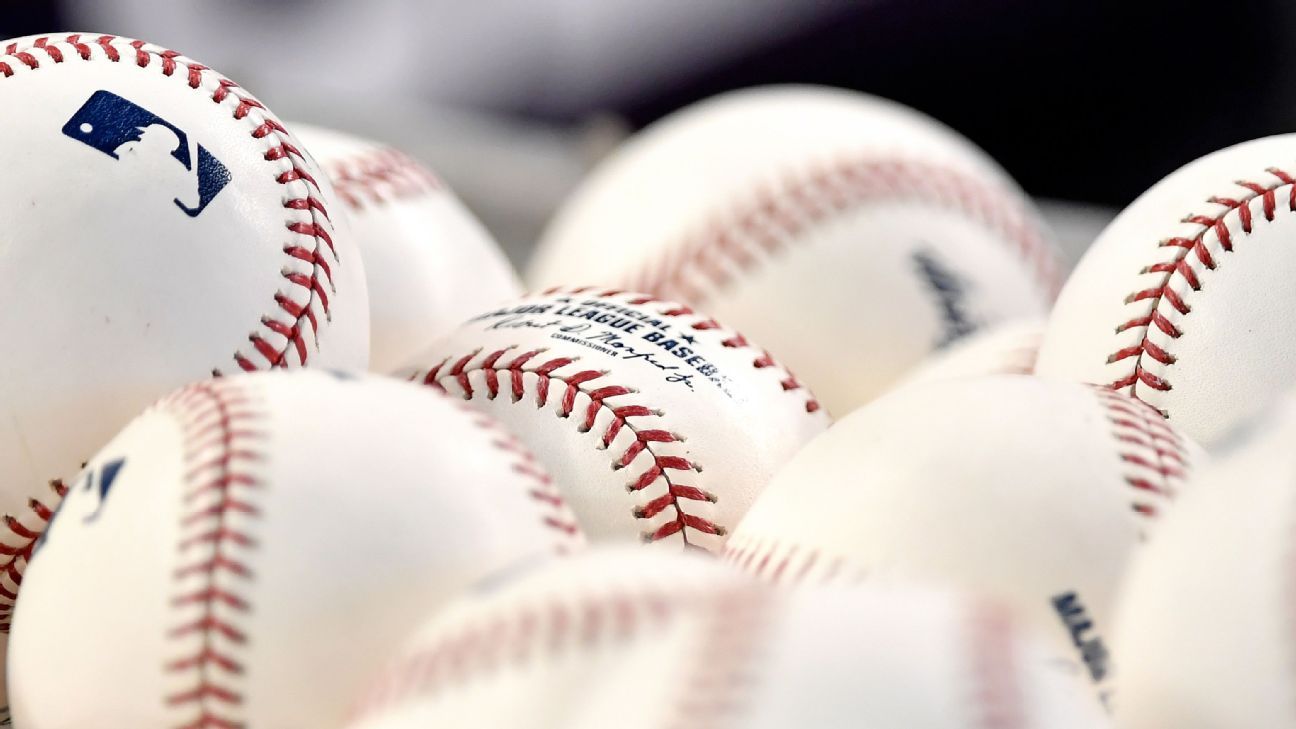
Major League Baseball and the MLB Players Association committed $10 million to help fund programs from The Players Alliance, made up of more than 100 active and former MLB players, aimed to increase Black American participation in all levels of baseball.
"As the stark racial minority in all aspects of our game, The Players Alliance has given a voice and platform to our Black players, unified in our stance against systemic racism," said former outfielder Curtis Granderson, president of The Players Alliance. "We stand together for what is right and to change our game for the better. The power of our player membership, including our non-Black teammates, coupled with the support of MLB and the Players Association, gives us the unique ability to create increased opportunities for the Black communities we care so much about."
Through the programs, The Players Alliance will receive grants, delivered annually through 2024, for programs meant to increase player-led mentorship; raise participation in baseball among Black youth and young adults through the funding of leagues, equipment donations and tournaments; offer Black cultural education, camps and programs aimed to break down barriers to baseball; increase Black business partnerships; support baseball programs in public schools; and provide grants, scholarships and community services to the Black community. The Players Alliance will also support programs from MLB and the players' association.
"Major League Baseball is committed to enacting positive changes within our sport to mirror those we hope to see in society," commissioner Rob Manfred said in a news release. "We believe that the efforts led by The Players Alliance will complement existing diversity initiatives and accelerate progress that will be beneficial for our game."
Alongside the leadership of Granderson, The Players Alliance has former major leaguers such as CC Sabathia and Edwin Jackson on the board of directors, with the active player advisory board including Tim Anderson, Dexter Fowler, Dee Gordon, Jason Heyward, Aaron Hicks, Cameron Maybin and Andrew McCutchen.
"Recent events and social unrest have profoundly crystallized the need for prescriptive programs and additional education designed to enhance Black participation at all levels of baseball for the betterment of our game as well as society," MLBPA executive director Tony Clark said. "We look forward to working with The Players Alliance and MLB to make lasting changes and to have a substantive impact in this important area."


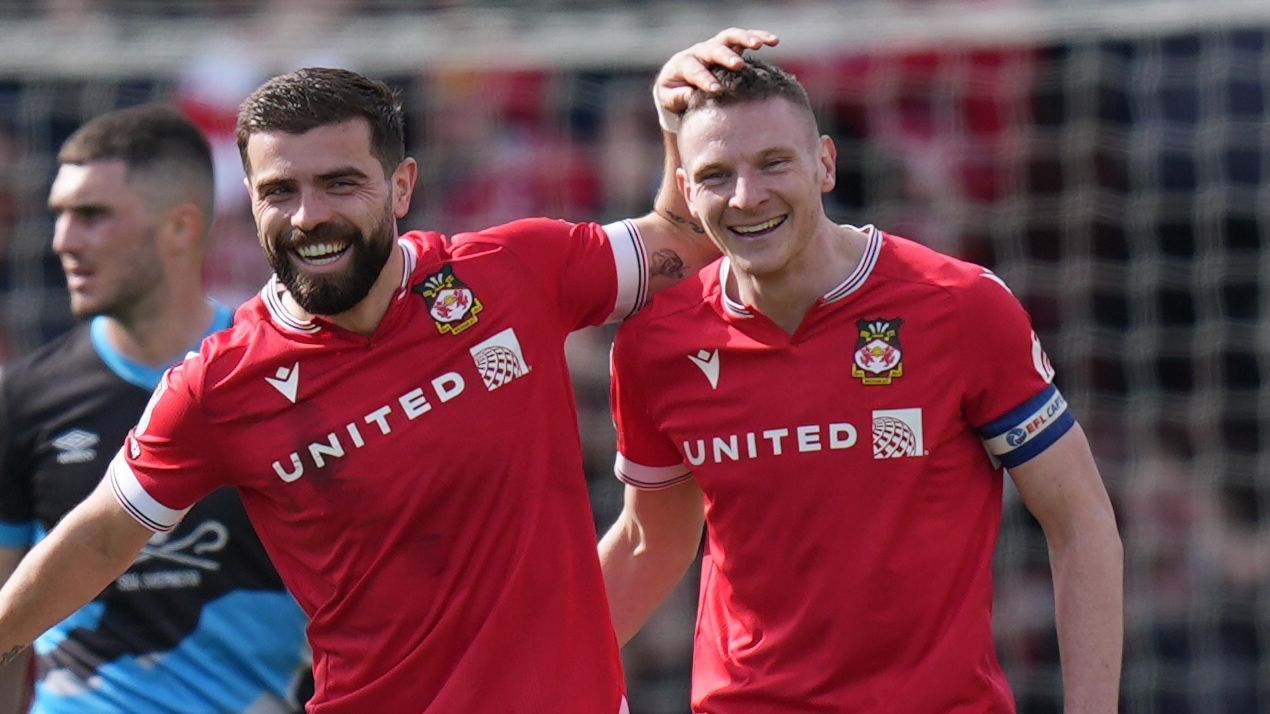







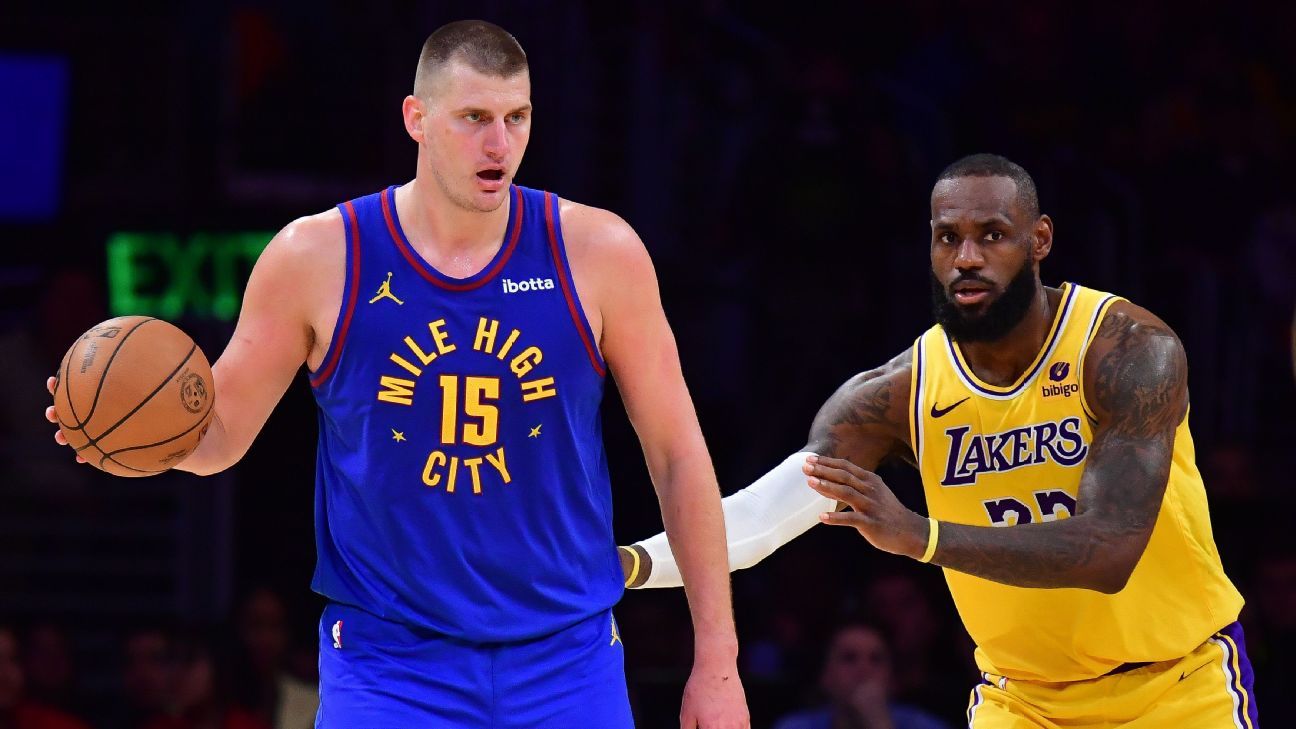
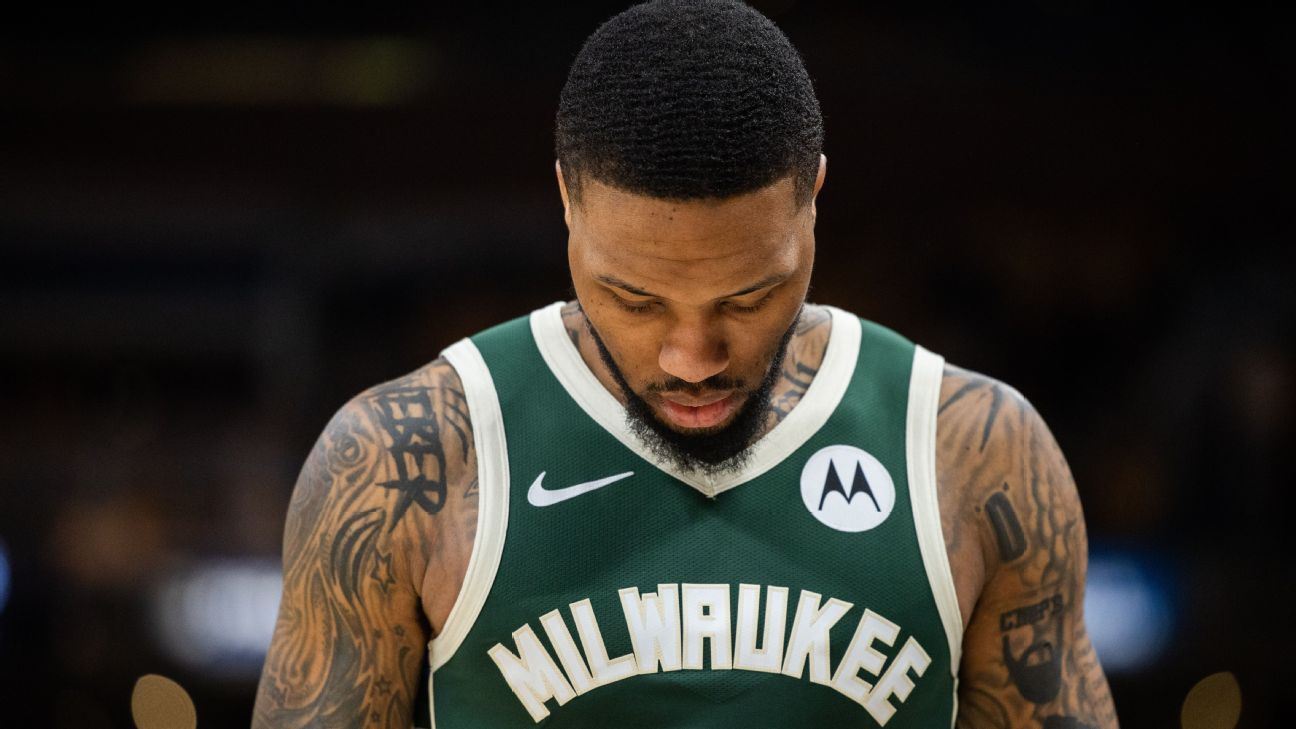

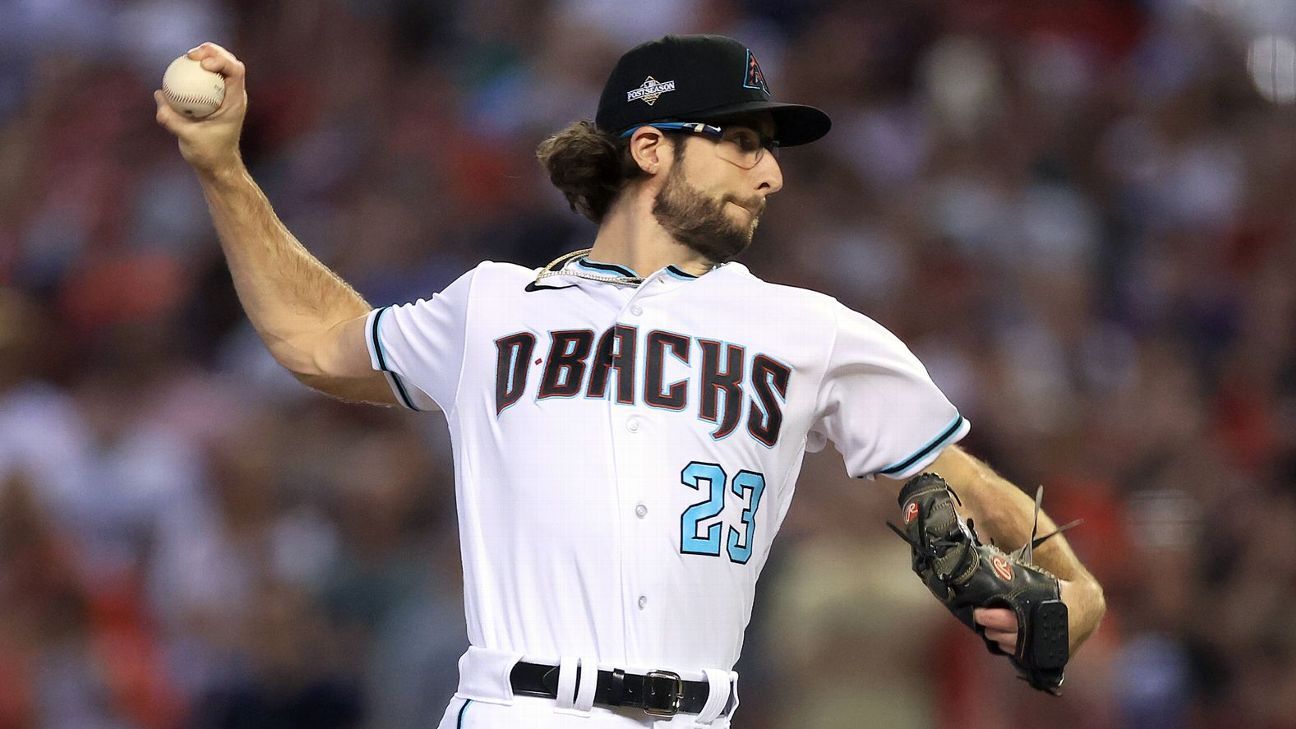

 Phone: (800) 737. 6040
Phone: (800) 737. 6040 Fax: (800) 825 5558
Fax: (800) 825 5558 Website:
Website:  Email:
Email: 






